For Those Who Came In Late: We’ve been exploring the history of the Keith Giffen/J.M. DeMatteis-helmed iteration of the JUSTICE LEAGUE, most remembered for its wacky hijinks and razor-sharp dialogue, despite the fact that there was a fair amount of drama and characterization being offered in those pages. And as comics readers of the time might remember, if you were looking for a slightly more serious Justice League book all one had to do was look one space over on the shelf…
Another thing that people forget nowadays when looking back on the JUSTICE LEAGUE INTERNATIONAL period was just how popular and successful it was, spawning several spinoff series, various miniseries, role-playing games, you name it. It wasn’t as if this book was just kind of languishing in the corner of the DC Universe; J’onn, Beetle, Booster and company were front and center, with guest appearances galore, because their book sold like hotcakes and readers wanted to see them. So much so that in April 1989, a second monthly Justice League series debuted, JUSTICE LEAGUE EUROPE, written by Giffen and DeMatteis and drawn by newcomer Bart Sears.
 |
The premise of the new series was simple enough, as following the events of the summer crossover INVASION!, JLI chief Maxwell Lord decides to bolster the League’s ranks by establishing a second branch of the team, to operate in Europe, based out of the League’s French Embassy in Paris. And who did Max send as the League’s European representatives? So glad you asked…
Leading the new team was Captain Atom, after a respectable stint with the JL’s New York team, a tenure marred only by the revelation that Captain Atom had only joined the team in order to spy on it for the U.S. Government. Considering that Cap Atom had only been allowed to join at the government’s assistance as a condition of the team’s being granted United Nations status, it always struck me as odd that the League would be so surprised at this notion. Anyway, as a result, Captain Atom feels he has a lot to prove in his new command role, and is often beset by insecurities in his new position, especially considering both the unfamiliar faces now reporting to him and his total ignorance of the French language, which comes to be a bit of a liability from a public relations standpoint.
Luckily, Captain Atom has his ubercompetent liaison, Catherine Cobert (yes, the same woman who rebuffed Booster Gold’s apparently clumsy proposition back in JL #8), to help him though the rough spots and bolster his often fading confidence.
(A bit of background on Captain Atom, if I may: Captain Atom was the third of the three most popular Charlton characters purchased by DC to get his own solo series, which debuted in 1987, not long after the DC Universe got rebooted in CRISIS ON INFINITE EARTHS. In the new revised DC version of the character (created by writer Cary Bates and artist Pat Broderick), career military man Nathaniel Adam is framed for treason in 1968, and agrees to volunteer for a dangerous weapons test in which a mysterious alien metal would be bonded to his skin, with the help of an atomic explosion.
The resulting blast not only coats Adam with the alloy and grants him flight and energy discharge powers, but it also catapults him decades into the future, where the long-thought-dead Adam is given a new identity and a new life as a superhero secretly working for the government, all the while still attempting to clear his name.)
Also transferring over to the JLE was Rocket Red, a.k.a. Dmitri Pushkin, the armored Ukranian superhero sent over by the Soviet Union to serve alongside Captain Atom as the USSR’s representative. Now sporting a more powerful and distinctive set of armor he picked up on an adventure on Apokolips, Dmitri is sent to Europe not only due to his fine work with the JL’s original team, but also because Maxwell Lord thought he had a better shot at getting Dmitri’s wife and children out of the Soviet Union if he was serving somewhere closer.
While Rocket Red was a fine supporting character in JUSTICE LEAGUE AMERICA, here the character was really developed well, not only frequently appearing unhelmeted or out of armor entirely to allow the readers to feel they knew him better, but occasionally engaging in action in only part of his armor, such as his gauntlets, as a subtle reminder of the character’s skills and bravery, that it wasn’t just the armor that allowed him to contribute. And when Lord succeeded in reuniting Dmitri with his family, rather than fall into the cliched trap of making Red the stereotyped henpecked husband, the presence of his wife and kids further highlighted Dmitri’s emotional role as the heart of the team. Dmitri is persistently portrayed as a working-class hero who’s there for the common good and to provide for his family. It’s a shame the character has faded into limbo, as it was a unique one.
In an attempt to increase the book’s star power, Wonder Woman was enlisted as a member early on, if only “part-time,” and whatever agreement existed between the editors of this series and hers must not have been notarized, because within two or three issues, Princess Diana vanished and never once returned.
Another of the company’s “big guns” was enlisted to join up, in the form of Wally West, the then-new Flash. This version of the character had only been around for a couple of years following the death of Barry Allen, and was having difficulty measuring up to his deceased uncle’s legacy, both in the pages of his own book and in the eyes of the fans. In particular, writer Mike Baron had established the former Kid Flash’s character as that of a money-grubbing Casanova, and that was most definitely the inception of the character as we see him in these pages — when Wally’s not lasciviously hitting on the female Leaguers, he’s repeatedly asking Captain Atom for a raise.
The new Flash also gets frequently razzed for not measuring up to Barry Allen’s example by his uncle’s old friend Ralph Dibny, a.k.a. the Elongated Man, another former Justice Leaguer from the “good old days” recruited to take part in the new European team. Ralph brings not only his amazing stretching ability and underplayed deductive skills to the team, he also brings, as always, his lovely wife Sue, who volunteers for perpetual monitor duty at the embassy, and quickly forges a solid friendship with league liaison Catherine Colbert, serving as both informal advisors and administrators, and usually the ones left behind to worry about the team.
In addition to the ability to speak French (one of the few Leaguers to be able to speak to the natives), Ralph also provides some much-needed experience to the team, a fact that tends to annoy the insecure Captain Atom.
Also lending an experienced hand to the team is the recently resurrected Metamorpho, a longtime Justice League associate who at long last accepts full membership here in JUSTICE LEAGUE EUROPE.
Metamorpho had been killed off not long before in the concluding issues of THE OUTSIDERS, his previous superhero team series, and had been even more recently resurrected in the pages of INVASION!, in which the “nega-bomb” set off by the invading aliens (which altered Fire’s powers and gave Maxwell Lord his persuasion abilities over in JUSTICE LEAGUE INTERNATIONAL), reconstituted Metamorpho and brought him back to life, albeit without much of his memory intact.
A much less experienced new member is Buddy Baker, a.k.a. Animal Man, included here undoubtedly for commercial reasons, in an attempt to boost the sales of his excellent but then underperforming solo series from writer Grant Morrison and artist Chas Troug. Buddy’s tenure in the JLE series itself is a little uneventful, with much of his appearances coinciding with a period in his own book when his powers weren’t working correctly, culminating in his leaving the team after 12 issues following personal tragedies that took place in his solo series. Still, Buddy’s inexperience and uncertainty provide a refreshing character for the others to play off of.
Actually, Animal Man’s best appearances with the JLE came in the pages of his solo series, once when J’onn J’onzz and a JLI tech crew arrives at his house to install his teleport tube, and once when Buddy, out for a romantic dinner in Paris with his wife Ellen, winds up having to accompany Metamorpho and Rocket Red in tackling the Time Commander.
Last but not least is Power Girl, one of those leftover continuity orphans in DC’s post-CRISIS universe who should have vanished into the vapor along with her backstory, but somehow managed to cling to publication, in Kara’s case, I think primarily because readers (and creators, for that matter) liked her costume.
With her Kryptonian heritage now wiped away (Power Girl had been Superman’s cousin, the Supergirl of Earth-2, before Earth-2 was undone), Kara was hastily given a new backstory linking her to the second-string sorcerer character “Arion, Lord of Atlantis,” which is admittedly quite a comedown from being Superman’s sole flesh-and-blood relative. In an effort to further remove Power Girl from her former Super-past, the character was critically wounded in battle early on, and in saving her life, several of her powers were lost, specifically the ones more commonly linked with Superman, such as flight, the heat vision, and the “absolute” invulnerability. In their attempt to revitalize the character, they even gave Kara a new costume, one that lacked the charm of the original, simple (if slightly provocative) supersuit designed by Wally Wood.
The writers retained Kara’s original aggressive personality, and even cranked it up a few more notches, although toward the end of the run they really overdid it, with the diet-cola-swilling Kara screaming and ranting over the smallest of perceived slights, taking what once was an unusually assertive but still believable female character and reducing her to a slightly misogynistic caricature.
In their first adventure, the JLE has to contend with a plot by the new Bialyan dictator the Queen Bee to discredit the new League, while playing off of Europe’s love for their original superhero team, the Global Guardians, which was decommissioned when the League was formed, and which is now brainwashed and under her control. After the Queen destroys the Guardians’ old HQ, now a museum, and pins it on the League, Captain Atom has had enough, and sends in a strike team to force the Queen Bee to back off.
After demonstrating how easily Justice League Europe (which is, although they never discuss it, vastly more formidable than the American branch) could infiltrate her nation and her compound, the Queen Bee agrees to an unsteady truce, which is, if not a complete victory for new commander Captain Atom, at least the beginnings of one.
Within the year, the first new member of Justice League Europe would be inducted, the French heroine Crimson Fox in JUSTICE LEAGUE EUROPE #10 (January 1990) by Giffen, DeMatteis and Sears. Fox (with a unique streamlined costume design by Bart Sears) first comes to the League’s attention when foiling a robbery of a giant charity globe filled with cash, which happens to come crashing into the Justice League Embassy, destroying Captain Atom’s bedroom.
After initially being accused of complicity in the robbery by Captain Atom, Fox is cleared by Batman (who had been attending the charity gala as Bruce Wayne), and after initial resistance, soon signals her willingness to work with the new League.
The flirtatious Crimson Fox, readers would later learn, was actually two women: Vivian and Constance D’Aramus, twin sisters who share a single life, in both Vivian’s role as CEO of Revson, a perfumerie and publishing conglomerate, and as the Crimson Fox. The sisters gained their powers of attraction thanks to their chemist parents’ experimentation with pheromones, and when their mother dies an early death from a cancer due to a superior’s insistence on testing the pheromone compound, and the girls swear vengeance on the man, not only taking over his company but beginning a vigilante career as the Crimson Fox, even going so far as to the stage the death of Constance to better protect their secret.
A word here about the art: Bart Sears, whose work is admittedly an acquired taste, provides a distinctive, angular style that serves the series extremely well. It differentiates it from the consistently more polished, smoother work seen its sister book JUSTICE LEAGUE AMERICA, while still retaining a strong facility with facial expressions and body language to keep the book’s comedic edge. Granted, Sears’ art had some drawbacks: he wasn’t the best at drawing really beautiful women, and it seemed like everyone was constantly sneering. Still, nobody drew a better Captain Atom than Sears, who really nailed Cap’s metallic-finish (even if Cap Atom was sporting a serious mullet).
As for the tone of the book, while there was still plenty of lighter moments throughout the series, and the occasional comedy issue, for the most part the book settled into a more serious pattern than its American counterpart, usually running longer, more traditional action/suspense story arcs, broken up with an issue or two of lighter fare. For example, take JUSTICE LEAGUE EUROPE #6 (September 1989), in which the non-French-fluent Leaguers are shuttled off to night classes to learn the language, only to coincidentally share a classroom with the Injustice League, looking to learn a few words of French to make bank robberies run a little more smoothly.
Since Metamorpho’s in the class the bad guys recognize the Leaguers, and try to get out of there, but are foiled by, of all things, passing notes in class. Naturally, a brawl ensues, and both hero and villain alike wind up in the slammer, since no one bothered to tell Captain Atom that his team enjoys diplomatic immunity.
Only two issues later, the tone was drastically different, focusing on the difficulties of performing the aforementioned necessary and lifesaving surgery on an invulnerable patient, the critically injured Power Girl, struck down in the line of duty alongside the combined Justice League teams in a battle the month before.
The high point of the JUSTICE LEAGUE EUROPE run was probably the five-part “Extremists” storyline from JLE #15 – 19, in which the Silver Sorceress and Blue Jay (you should remember them from JUSTICE LEAGUE #3, the otherdimensional heroes determined to save our world from the apocalyptic fate that theirs suffered) escape from the Soviet prison they’ve been languishing in since the incident at the Russian nuclear plant.
While Blue Jay merely wants to live his life on their new world, the Silver Sorceress decides to return to what’s left of their home, only to discover that the vicious supervillains who triggered their world’s nuclear Armageddon, the Extremists, are still alive after all, and being the only ones left on their planet, they’re bored, bored, bored. The villains, once more tributes to classic Marvel bad guys, but redesigned in Bart Sears’ unique style, are real badasses, and once they make the jump to the JLE’s Earth, consistently trounce the Justice League in battle after battle, eventually holding every nation hostage by magnetically holding all of the world’s nuclear missiles in orbit above the planet, while interdimensionally stranding Justice League Europe back on the Extremists’ dead world.
The story takes an even weirder turn from there, involving a thinly disguised Walt Disney emerging from his cryogenic chamber and, well, I hesitate to say much more. Trust me, go track down the back issues for yourself.
Following the “Extremists” storyline, Silver Sorceress and Blue Jay settled in as the newest members of the JLE, a surprising but logical turn, and were around for another more serious story arc, the return of Starro the Conqueror in JLE #26 – 28.
Here the evil alien starfish convinces fellow alien and JLI handyman Kilowog to build him a ship to help him leave Earth once and for all, only to see Starro blow the ship up over London, showering his starfish drones all over England. As Starro’s drones begin taking over Europe, only Captain Atom, Rocket Red and Metamorpho remain free, since the starfish drones can’t properly adhere to their faces. It’s compelling stuff.
While the JUSTICE LEAGUE INTERNATIONAL/AMERICA series is more fondly remembered, fans looking for the same flavor with a lot more action could do a lot worse than tracking down the first 30 issues or so of JUSTICE LEAGUE EUROPE, one of the better superhero books of the ‘90s. It’s a shame this stuff isn’t collected (and due to the unpleasant circumstances surrounding the series’ eventual co-writer Gerard Jones, likely never will be).
THINGS BREAK DOWN
After five years and about 80 issues, Keith Giffen and J. M. DeMatteis decided to call it quits, and ended their era of the Justice League with the 15-part series “Breakdowns,” running consistently between JUSTICE LEAGUE AMERICA and JUSTICE LEAGUE EUROPE. Unfortunately, the series doesn’t end as strongly as it began. It feels kind of like they had two or three separate ideas about how to end the series, and wound up using all of them, one after the other, with each having less impact than the last. (And it doesn’t help that the art is for the most part little better than average, with only an issue or two by trademark League pencillers Kevin Maguire and Bart Sears.) Kicking off with an assassination attempt on Maxwell Lord, the League finds itself under new management in the form of a new UN-appointed chief, who then fires Captain Atom, Beetle, Ice and Ralph Dibny.
As it turns out, the assassination and new chief were all part of a larger plot by the Queen Bee, and once that’s foiled, the League is officially disbanded by the UN, with both teams eventually setting up shop back in the old Secret Sanctuary once more. After that is the return of Despero and Lobo, and after that comes another return of the Extremists, all of which winds up exhausting the reader, so that when the end finally comes and most of the team members sort of halfheartedly resign and walk away, the reader is left with the same inclination.
A well-intentioned but ultimately less than satisfying conclusion to a great series.
So to sum up: the first 50 issues of JUSTICE LEAGUE INTERNATIONAL and the first 30 issues of JUSTICE LEAGUE EUROPE? Great, great comics. Funny, clever, and tense, with consistently excellent art and compelling characterization that keeps you coming back, in addition to the laugh-out-loud moments the book is known for. Go pick up the available trades and the remaining back issues. You can thank me later.

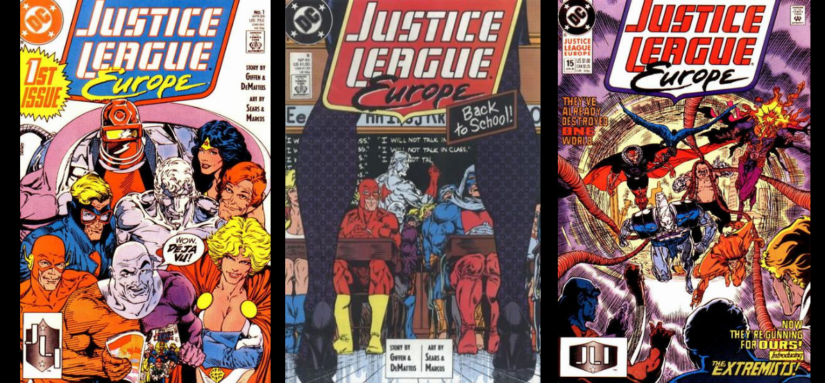


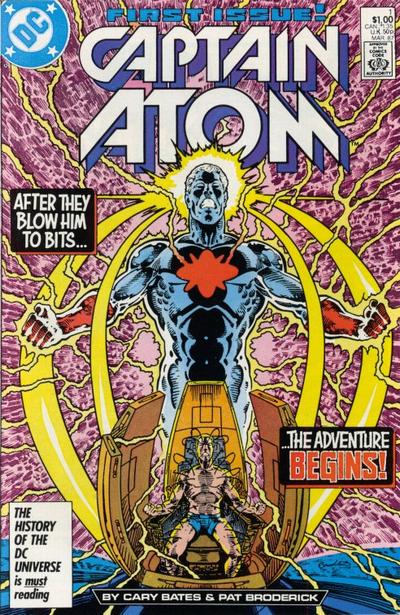


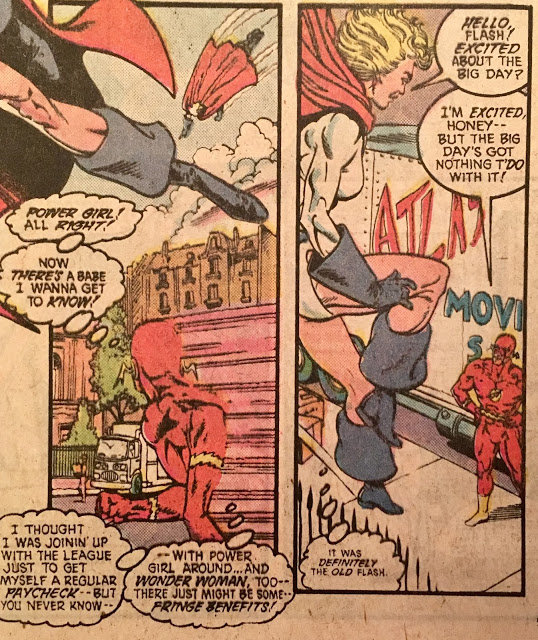
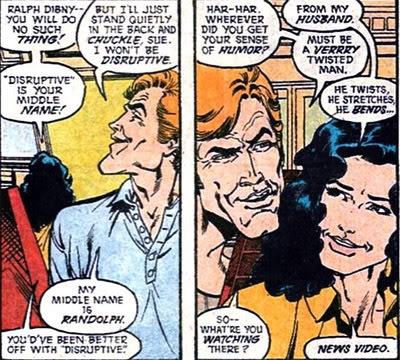
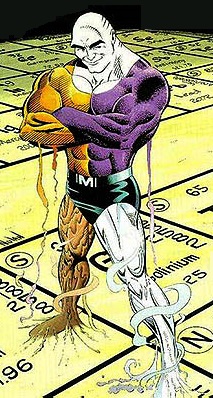
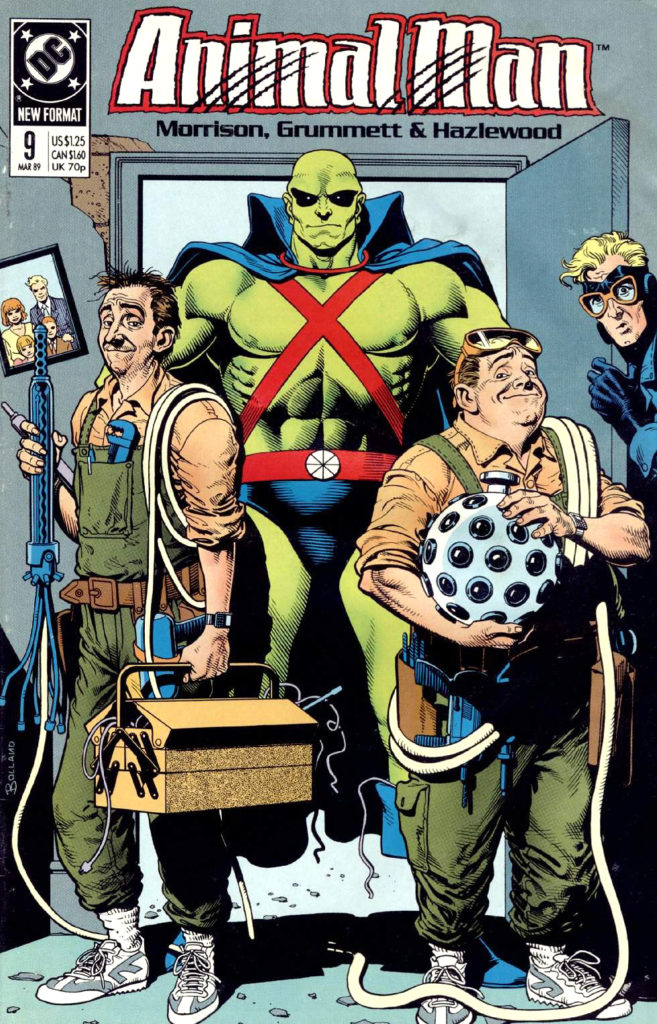

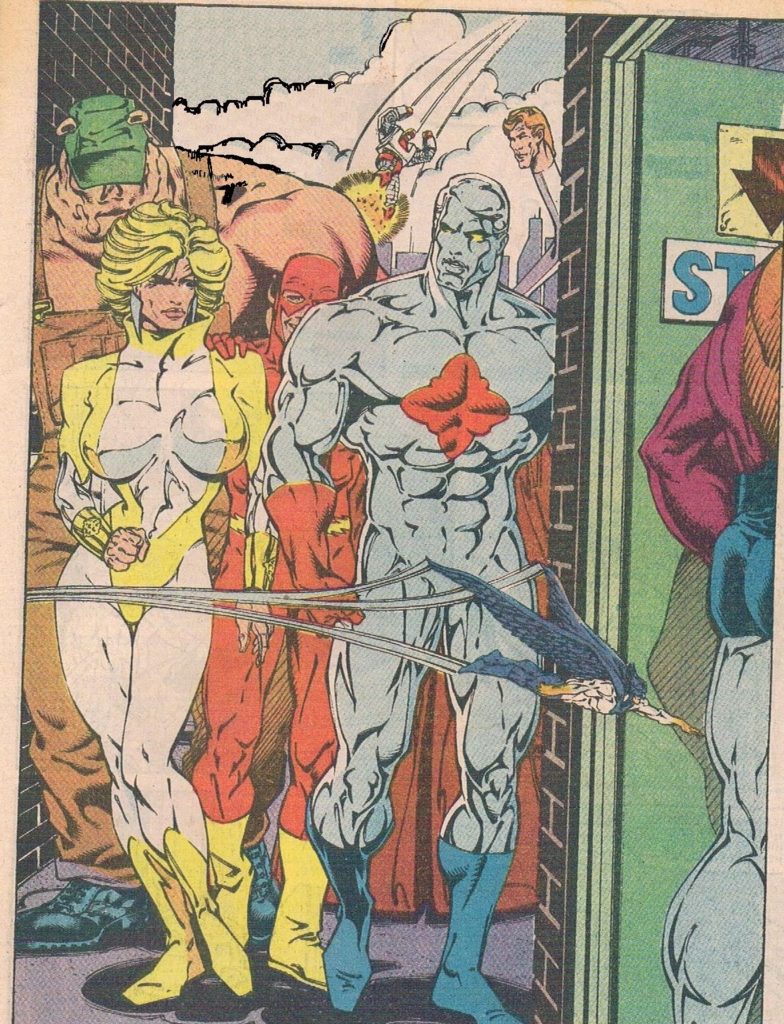

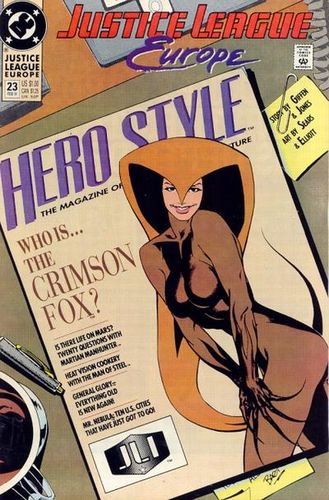
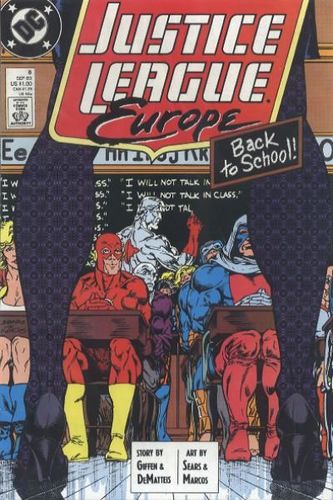

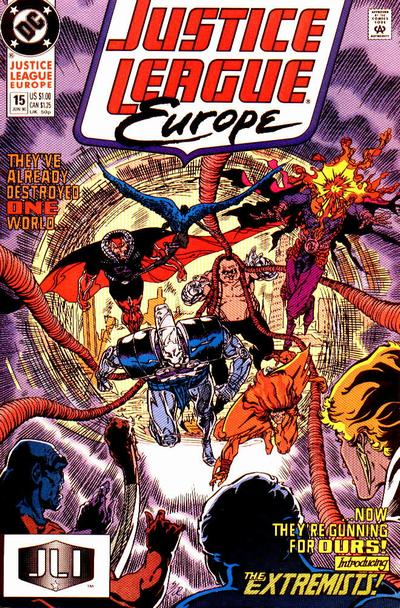

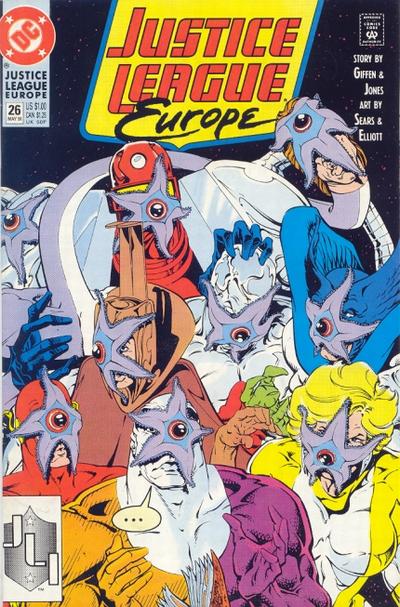
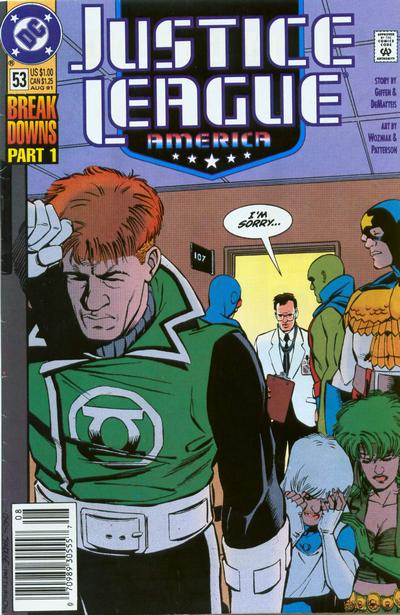
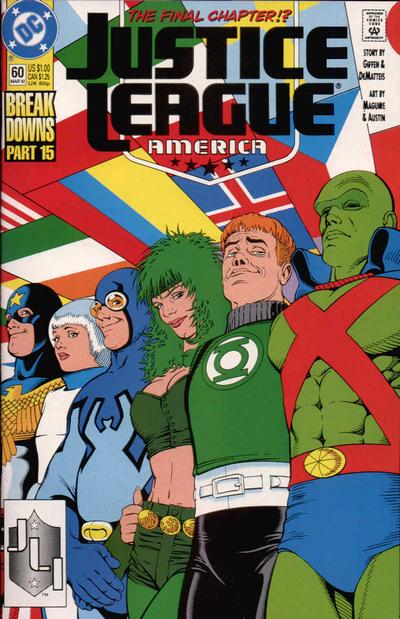
Comments are closed.